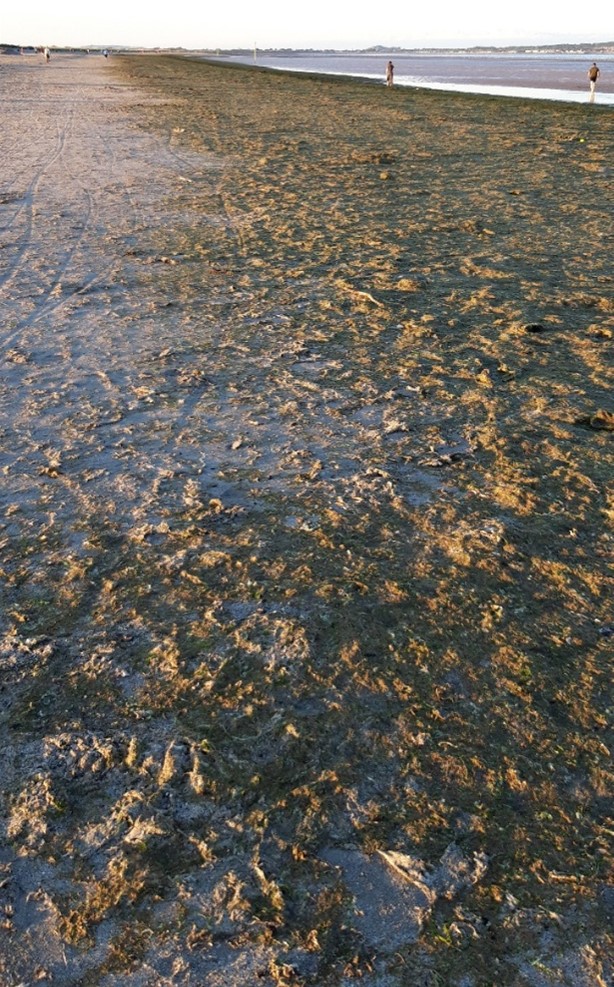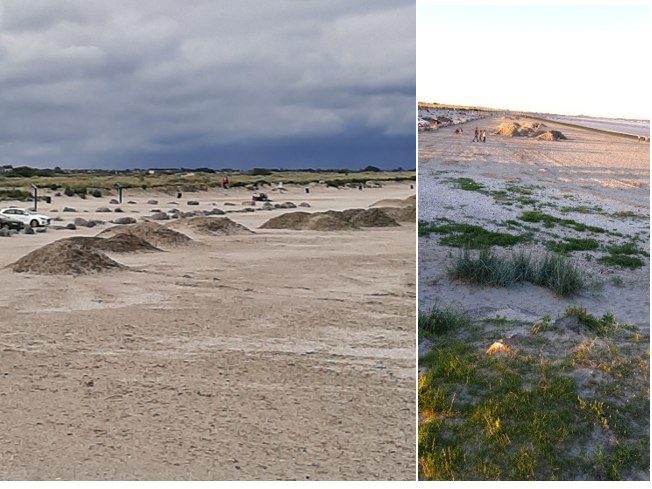Background
Increased coastal erosion is a recognised consequence of Climate Change and is associated with rising sea levels, extreme storm events and coastal surges of water and wind. Dollymount Strand is a popular bathing and water sports location for Dublin City residents. It is situated on North Bull Island and is managed as a beach by Dublin City Council. It is part of a Special Area of Amenity by Order and a Special Area of Conservation, Special Protection Area, a Ramsar Wetland and is part of a Natura 2000 site and Dublin Bay Biosphere (UNESCO) . The amenity value and biodiversity value of the beach have equal priority under these designations and inform how the outdoor staff manage this unique landscape. Dublin City Council have also adopted the standards of the An Taisce Blue flag status for the management of Dollymount Strand.
The beach is bound on one side by a complex dune structure and on the other side by Dublin Bay with adjacent industrial features the including the Ringsend Wastewater Treatment Plant (Ringsend Plant) operated by Irish Water.
In late summer and autumn, particularly during high tides, warm weather and after storms, a seaweed called Ectocarpus siliculosis can wash up and accumulate on beaches in Dublin Bay. When the seaweed begins to break down naturally, it changes to a dark brown colour and emits a foul odour. Members of the public often mistake this for sewage effluent and believe it is discharged from the nearby wastewater treatment plant in Ringsend. As North Bull Island is a popular bathing spot, the presence of Ectocarpus can deter the public from using the beach.
In order to preserve the ecosystem of the beach, Ectocarpus is not removed from the beach as it is part of the natural process contributing to the rich biodiversity of Dublin Bay.

Ectocarpus carpeting at Dollymount Strand, Dublin CARO August 2020
The Solution

Ectocarpus mounds near fore dunes Dollymount Strand, North Bull Island. Dublin CARO August 2020
When there is enough accumulation of the Ectocarpus on Dollymount Strand, the Ectocarpus is racked into mounds of up to 2 metres in height. These mounds are placed in front of the sand dunes along the strand. The mounds act as nature based, soft engineering coastal defence by providing an initial barrier to the force and scouring effects of large volumes of water, thereby helping to reduce coastal erosion of the dune structure. The mounds are also cleared of any major litter which could cause pollution and get washed back out to sea.
Staff have observed that this is helping to slow down dune erosion in this part of the beach and research has been carried out to determine the effectiveness of this technique.
The Benefits
- The mounds help protect sensitive habitats, such as the dune system and wetlands, from coastal erosion.
- Leaving the Ectocarpus on the beach preserves the natural ecosystem of the beach, which provides food sources for insects, birds and other invertebrates.
- Moving the Ectocarpus into mounds clears parts of the beach that are frequented by bathers and walkers, thus encouraging continued use of the park.
- The public are also kept informed of bathing water quality via the Council website: https://www.dublincity.ie/bathingwater the EPA’s website: www.beaches.ie and via real time electronic signage on the beach and by the lifeguard and the ranger service, which operates from the North Bull Island Interpretative Centre.
.jpg.aspx) Ectocarpus carpeting South Side Dublin Bay, Niamh Ni Cholmain September 2016
Ectocarpus carpeting South Side Dublin Bay, Niamh Ni Cholmain September 2016